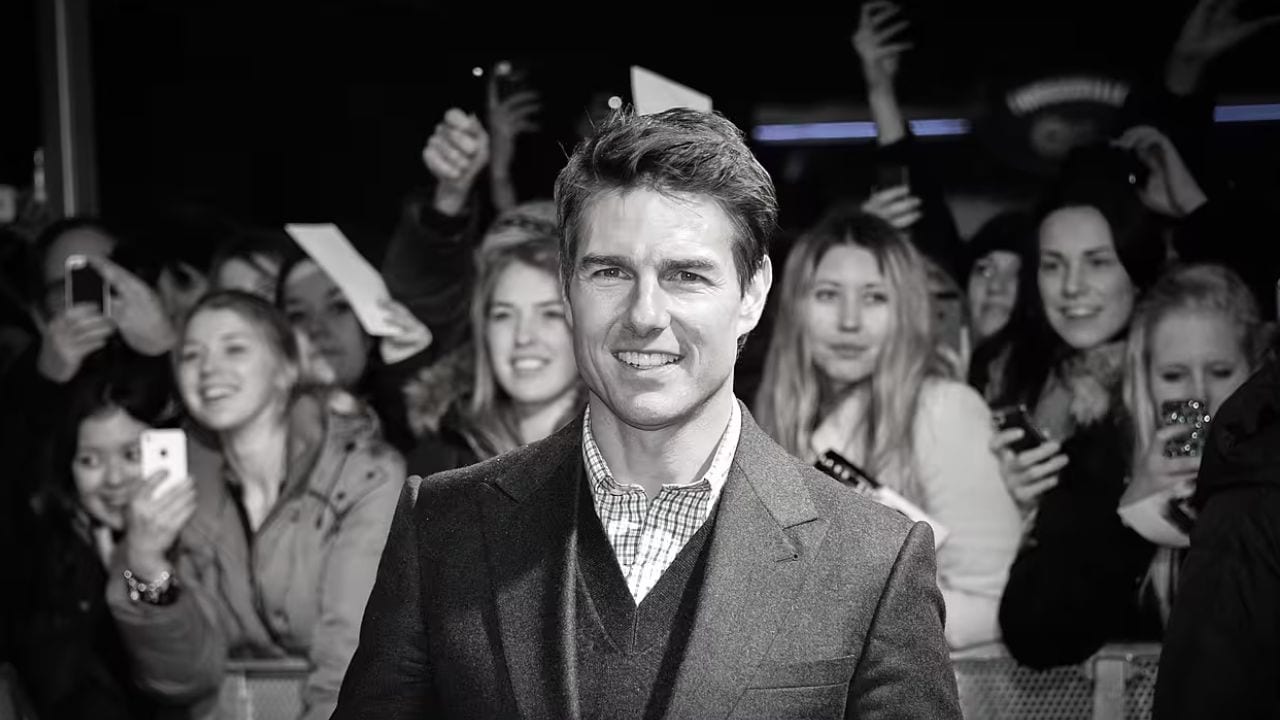This week marks the fifth since Mission: Impossible – Dead Reckoning Part One came alive in full vigour on theatre screens in India. Tom Cruise reprised his role as Ethan Hunt, a character that has tasted acclaim and continues to since 1996.
Even with stiff competition from Oppenheimer, Barbie and Bollywood’s Rocky aur Rani Ki Prem Kahani, Mission: Impossible paved its way to the Rs 100 crore club, which marks a first for Cruise in India. Globally, the film has grossed $522 million.
Touted as one of the highest-paid actors in the world, Cruise, with an estimated net worth of $600 million, is undeniably and undoubtedly a favourite among brands. Storyboard18 covers the Top Gun: Maverick star’s brand playbook.
Mission: Impossible 7
Since the release of the film – the seventh in the series – in India, apart from Cruise’s fans, brands have not been able to contain their excitement about the movie and the return of Hunt. PVR Inox came up with AI-generated posts that saw Hunt don a variety of roles in different parts of India.
In Mumbai’s cinema halls, Swiggy Instamart’s delivery agents went “undercover” as secret agents who made a surprise entry and handed out snacks and juice to members of the audience.
Recently, Viacom18 Studios took over the app of food delivery platform Swiggy in order to let the delivery partners or agents enjoy the experience of delivering their orders via parachutes. Apart from that, VR booths were set up across the country where fans could experience the most ‘famous stunt’ of the film.
Brand partners and presence
There is ample scope for a range of products to be featured in Cruise’s action-packed movies and promotional events – from accessories to flashy cars.
Oakley, a clothing and sports equipment company owned by Luxottica that has been manufacturing performance-minded eyewear since 1975, started its brand association with Cruise as early as in the Mission: Impossible II days.
When Mission: Impossible II was released in 2000, customers walked into Oakley retail stores to get hold of the glasses that Cruise sported in the film. Sales of the glasses touched $100 million in the second quarter of 2000.
The brand will come up with its next set of custom pairs for Mission: Impossible – Dead Reckoning Part Two, which will be released in 2024.
In M:I 7, a vintage Fiat 500 gave the audience a glimpse of its prowess that helped Cruise, 61, and co-star Hayley Atwell evade their chasers.
The partnership between BMW and Paramount Pictures, the maker and distributor of the Mission: Impossible films, dates back to 2011, when Mission: Impossible – Ghost Protocol was released.
For 2018’s Mission: Impossible – Fallout, Hunt used a BMW M5 and a number of other models, including the 1986 BMW 5 Series Saloon, the BMW 7 Series Saloon and the BMW R nineT Scrambler. For 2015’s Mission: Impossible – Rogue Nation, BMW was the automotive partner.
This year, during the promotion of the film, Cruise sported a Santos de Cartier watch and a Vacheron Constantin Overseas Perpetual Calendar Ultra-Thin watch. The latter debuted during the promotion of Top Gun: Maverick in 2022.
In the 2001 film Vanilla Sky, the star sported an IWC Mark XV watch.
When Mission: Impossible was first released in 1996, technology company Apple partnered with the film. Here, Cruise as Hunt promoted the Apple PowerBook in a television commercial. The link to the website towards the end came up as www.mission.apple.com.
As per a report, the brand decided to promote the movie in its commercials in exchange for featuring the Apple PowerBook laptop in the film.
Deal value
With well-known brands finding themselves a part of Cruise’s films and promotions, his estimated earnings touched $100 million in 2022.
In 2004, his endorsement deal with Tag Heur was worth $100 million, and for Pepsi and Omega, the deal values were $100 million and $60 million, respectively. As per a media report, his earnings through endorsements stood at $50 million.
To the aid of Ray-Ban
It was the 1980s. heavily-knit and oversized accessories were trending. This affected the US-Italian brand Ray-Ban, which then began to try sailing through turbulent waters.
On an annual basis, Ray-Ban was able to sell only 18,000 pairs. After the men’s monthly magazine GQ highlighted the brand in a feature, sales shot up to 200,000 pairs.
Then came the film Risky Business in 1983, in which Cruise sported Ray-Ban Wayfarers throughout the film and in the movie posters. This visibility pushed sales up to 360,000 pairs.
In the 1986 film Top Gun, Cruise donned Ray-Ban’s Aviators, which went on to add further fame to this style of luxury eyewear. Sales picked up by 40 percent within seven months of the film’s release and by 1988, Ray-Ban was producing 4.5 million Aviators.
Thirty-six years later, in Top Gun: Maverick, there was a beach volleyball scene in which the movie star and others wore Ray-Ban sunglasses. This further added visibility to the brand.
Ray-Ban is owned by Italian eyewear conglomerate Luxottica Group, which acquired the brand from Bausch & Lomb for $640 million in 1999.
